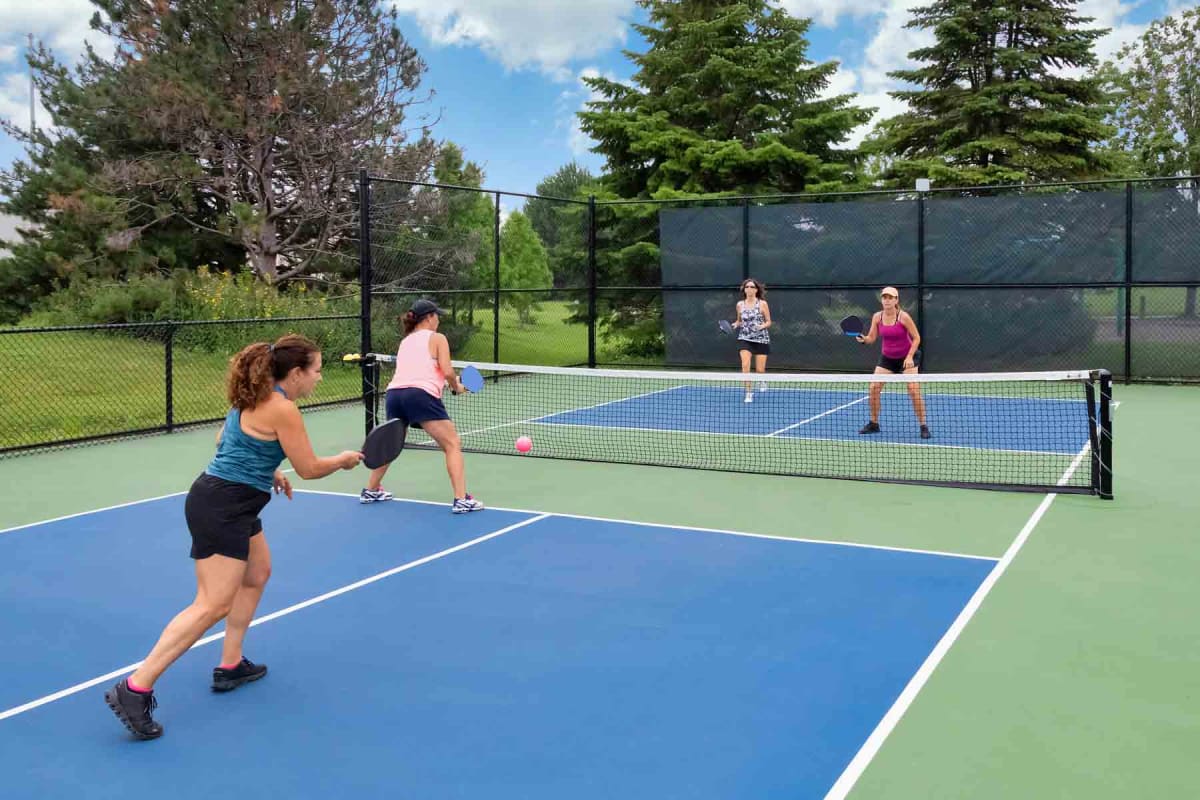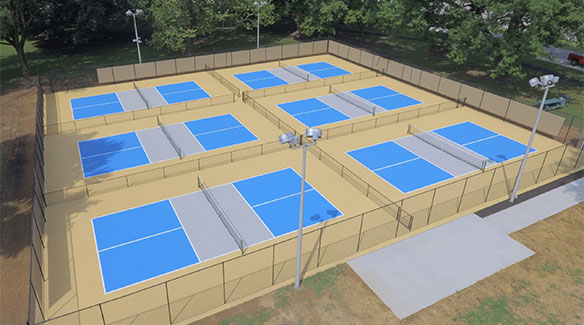Increase Resident Involvement With Community-Driven Pickleball Court Projects
The emergence of community-driven pickleball court jobs presents a distinct possibility to foster regional involvement and enhance neighborhood connections. The genuine inquiry stays: just how can these grassroots initiatives be tactically applied to make sure sustainability and inclusivity in diverse areas?
Relevance of Community Interaction
Neighborhood interaction is a critical element in the successful development of pickleball court projects, as it cultivates a sense of ownership and collective responsibility among residents. When community participants are proactively entailed in the preparation and application stages, they are most likely to advocate for the task's lasting success. Involving stakeholders such as neighborhood players, family members, and leisure teams makes certain that the facilities fulfill the diverse demands and preferences of the community.
In addition, area involvement cultivates a helpful environment where homeowners really feel empowered to add their concepts and resources. Pickleball court construction. This joint technique can result in ingenious services that enhance the design and functionality of the courts, making them extra enticing to a larger target market. In addition, including residents in decision-making processes can enhance social ties, advertising inclusivity and unity within the neighborhood
The visibility of community assistance for a pickleball job can additionally play a crucial role in safeguarding funding and approval from neighborhood authorities. By demonstrating a common commitment to entertainment advancement, neighborhoods can properly promote for sources and policy changes that favor the facility of pickleball courts, ultimately improving the local society and recreational landscape.
Actions to Start a Task
Starting a pickleball court task requires a methodical approach that constructs on the foundation of neighborhood involvement established in previous discussions. The very first step is to assemble a job board consisting of local stakeholders, fanatics, and agents from pertinent companies. This diverse group makes certain that several viewpoints are thought about.
Following, perform a demands analysis within the neighborhood. Studies, focus groups, and public meetings can be efficient in assessing rate of interest and gathering input on potential court locations, preferred features, and organizing preferences. Following this, establish a job strategy detailing duties, timelines, and purposes.
As soon as the strategy remains in location, involve with regional authorities to understand zoning laws and any type of needed authorizations. Communicating transparently with the community throughout this process is important, as it promotes count on and motivates more engagement.
Furthermore, organizing community events can help keep momentum and enthusiasm. These occasions can offer as platforms for further discussion and help to reinforce area connections. Document every action taken and preserve detailed documents, as this will be useful for future stages of the project, consisting of funding and resource procurement.
Funding and Resources Available
Protecting funding and sources for a pickleball court job is frequently a vital action that can determine the task's expediency and success. Various methods exist for obtaining financial backing, ranging from public financing to personal sponsorships. Local federal government grants, often aimed at promoting area wellness and leisure, can supply substantial economic backing for such campaigns.
In addition to government resources, not-for-profit organizations and foundations regularly provide gives particularly for sports and neighborhood development jobs. Involving local organizations as sponsors can additionally be a productive method; many business are eager to spend in community initiatives that improve their company social responsibility profile.
Crowdfunding platforms have emerged as a feasible alternative for grassroots fundraising, enabling community participants to add straight to the task. This approach not just raises funds but also promotes a sense of ownership among individuals.
Layout and Preparation Factors To Consider
Reliable layout and preparation are basic components of any effective pickleball court task adhering to the procurement of financing and resources. A detailed analysis of the recommended place is necessary; this consists of analyzing accessibility, proximity to existing area services, and link the possibility for exposure and involvement.
The format of the court need to follow official size requirements while taking into consideration the bordering setting. Integrating features such as seats, color structures, and proper illumination can substantially improve gamer experience and viewer enjoyment. Products picked for the court surface area ought to prioritize durability and safety and security, with choices like acrylic or asphalt offering ideal performance.
Entailing neighborhood participants in the style process cultivates a sense of ownership and makes certain that the facility fulfills regional needs - Pickleball court construction. This can be attained via public assessments and studies, enabling stakeholders to share their preferences and problems
Sustainability needs to likewise be a top priority; integrating environment-friendly materials and methods can contribute to lasting stability. Producing an upkeep plan to guarantee the court continues to be in excellent condition will certainly sustain ongoing neighborhood involvement and participation in pickleball activities.

Success Stories and Study
Highlighting the transformative effect of community-driven initiatives, numerous success stories illustrate just how this page collective initiatives go to website have resulted in the growth of dynamic pickleball courts throughout different regions. One remarkable example is the campaign in a village in Florida, where citizens united to convert an underutilized tennis court right into a dedicated pickleball center. Through fundraising occasions and partnerships with neighborhood companies, the area increased enough funds to set up brand-new nets, resurfacing, and lines, inevitably fostering a vibrant hub for regional gamers.
Likewise, in a suburban location of The golden state, a grassroots movement arised to create pickleball courts in a regional park. The task not only involved volunteers for building and construction but likewise consisted of workshops to engage neighborhood participants in the sport. Therefore, the courts came to be a prime focus for social interaction and health and fitness, attracting players of every ages.
These instance studies exemplify just how community-driven tasks can enhance regional involvement, advertise physical activity, and strengthen social bonds. By leveraging cumulative sources and excitement, communities can successfully sustain and develop pickleball facilities that serve varied populaces and promote a sense of belonging.

Conclusion
By focusing on stakeholder involvement throughout the planning and application stages, these campaigns can effectively attend to varied area needs. Ultimately, such efforts add to the makeover of public rooms into dynamic centers of physical fitness and social communication, reinforcing area connections.
The emergence of community-driven pickleball court projects presents a distinct chance to promote neighborhood involvement and reinforce area connections.Area engagement is an important aspect in the successful advancement of pickleball court jobs, as it promotes a sense of ownership and collective responsibility among residents. When community participants are proactively entailed in the preparation and application phases, they are a lot more likely to support for the task's lasting success.Launching a pickleball court job needs an organized technique that builds on the foundation of neighborhood involvement developed in previous conversations. The task not just involved volunteers for building but also consisted of workshops to engage community participants in the sporting activity.
Comments on “Typical Mistakes to Avoid in Your Pickleball Court Construction Process”